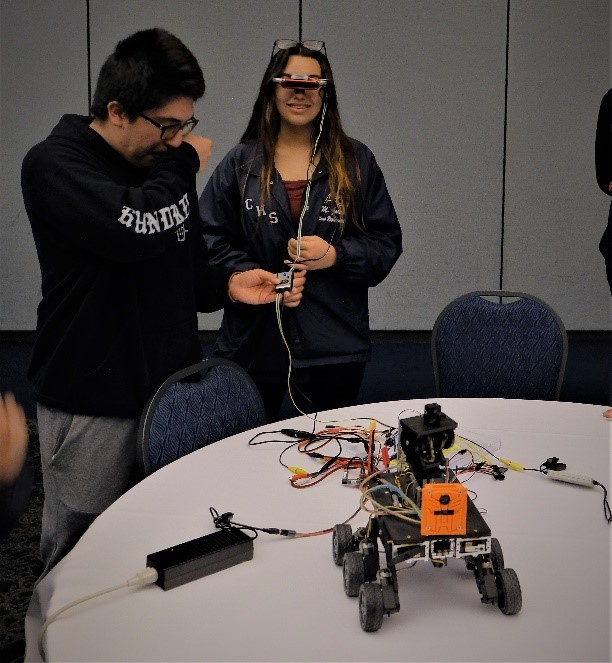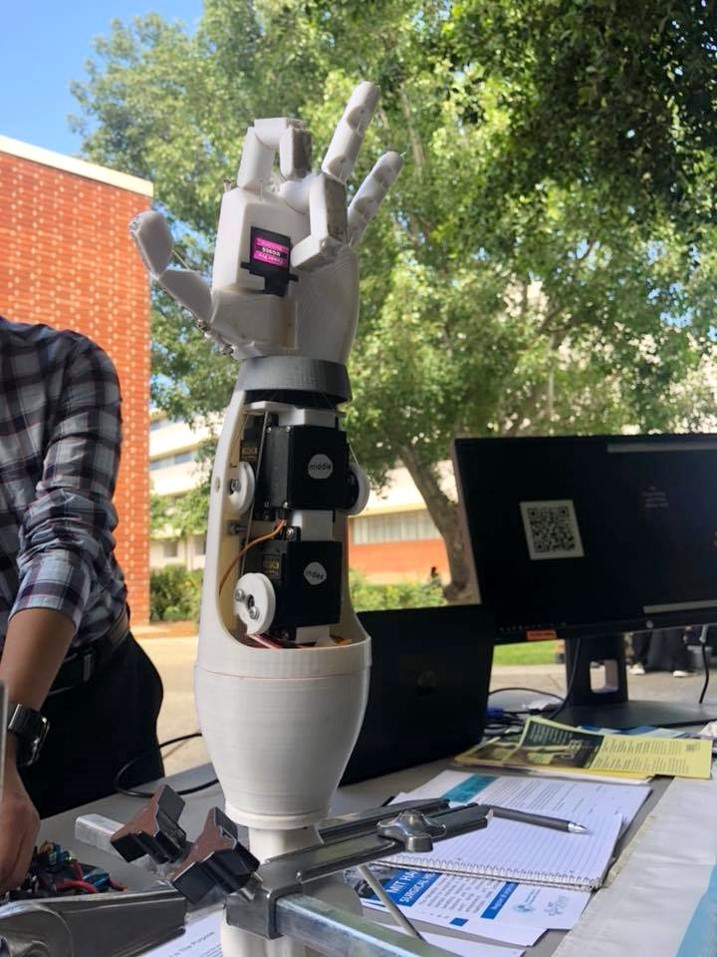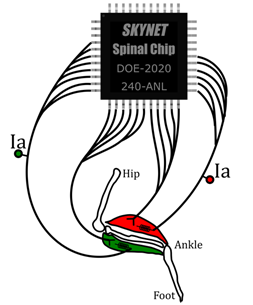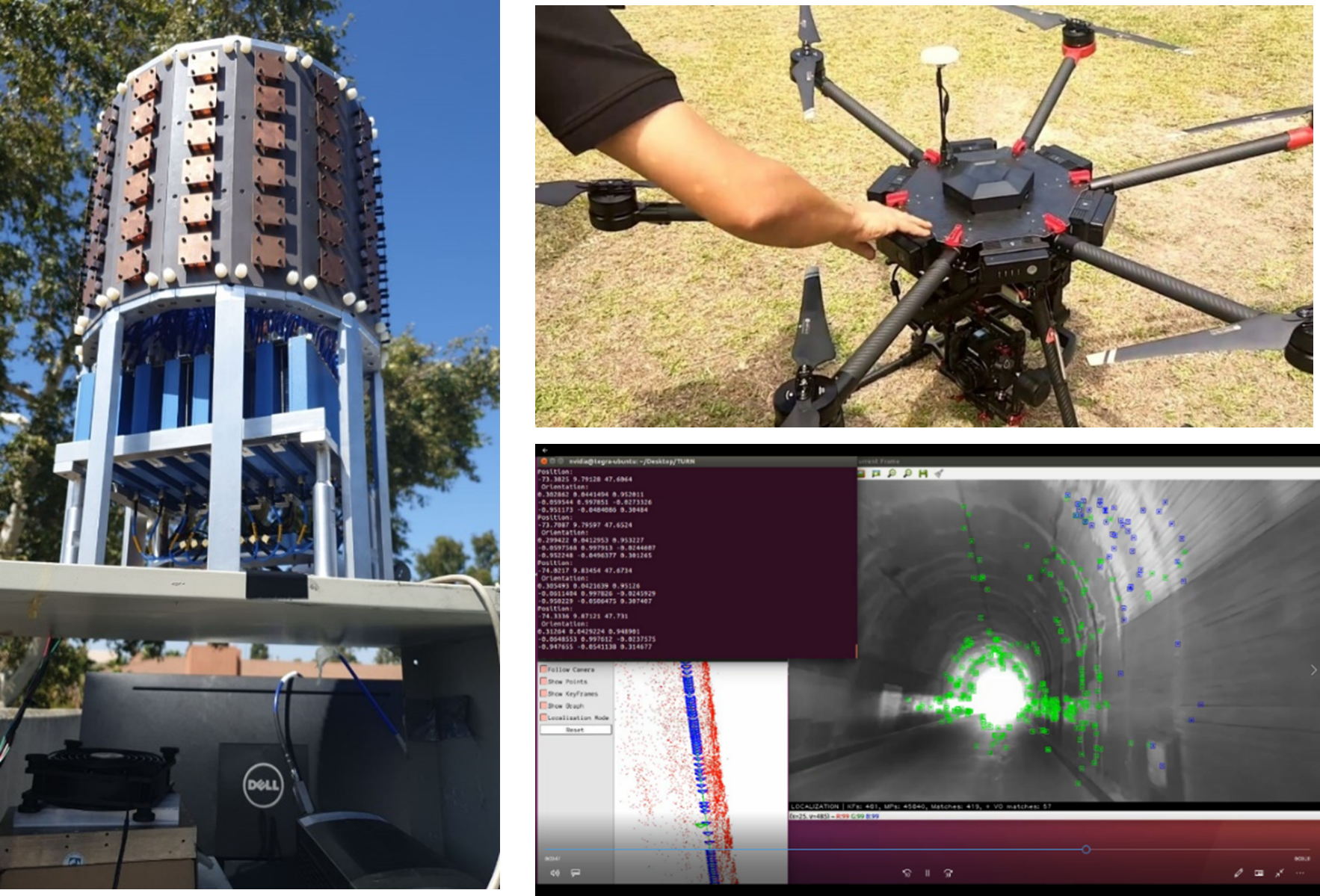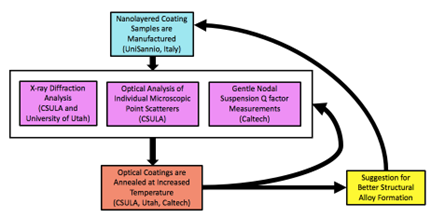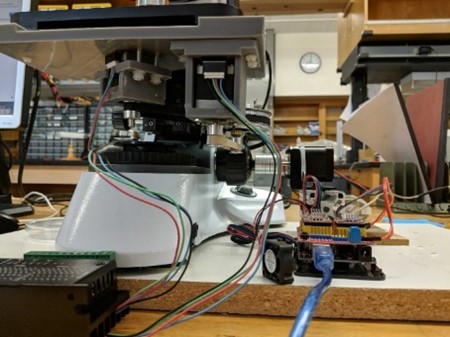Embedded Architecture Lab
Faculty advisor: Charles Liu, Airs Lin, Mo Zhang
The Embedded Architecture Lab was a spin-off of the former Structures, Propulsion, and Control Engineering (SPACE) Center, NASA University Research Center (URC) at California State University, Los Angeles. The Embedded Architecture Lab seeks to transfer innovative technologies to the development of Internet of Things (IoT) based on heterogeneous computing, machine learning, robotics, wireless sensor network, Field Programmable Gate Arrays (FPGA), and System-on-Chip (SoC). The Embedded Architecture Lab actively participates in the open house and outreach events to enhance the technology literacy and promote the STEM education. The faculty advisors sponsor over 10 senior design projects and 25 master thesis research projects. The industry sponsors of the Lab include Intel, Boeing, Xilinx, saya, Cypress Semiconductor, and NXP Semiconductors.
NetLab
Faculty Advisor: Deborah Won
The Neuroengineering Technology Laboratory (NETlab) seeks to develop medical device therapies and technology which ultimately improve the lives of patients suffering from nervous system disorders or dysfunction. At the core of NETlab research are devices which interface with the nervous system to either apply therapies in order to alter the behavior of the nervous system or to acquire and analyze signals from the nervous system. The work of NETlab brings together a mixture of hardware development, software engineering, computational analysis, neurophysiology, kinesiology, and animal and clinical experimentation.
Power and Energy Lab
Faculty Advisors: Drs. Masood Shahverdi and Arash Jamehbozorg
The Power and Energy Lab focuses on the following areas: Microgrid Control and Energy Management Systems, Renewable Energy Sources (Solar PV and Wind), Electric Vehicles, Energy Storage Systems, Power Systems Optimization, and Power Systems Dynamics and Stability.
Bio-inspired Computing Lab
Faculty Advisor: Curtis Wang
The Bio-inspired Computing Lab uses inspiration from biology to create new computing paradigms for control of cyber-physical systems. The applications we work on range from machine learning-based control of biomedical therapies, to embedded systems that control instrumentation for collecting high-throughput data from mammalian spinal cords, to high-performance computing (supercomputing) for processing terabytes of imaging from micro- and nano-scale computed tomography of mammalian spinal cords. Ultimately, the mammalian spinal cord is much smarter than a bundle of cords; the spinal cord has its own memory and fast local computation of complex motions that serve as a strong inspiration for computing architectures of the future. Our lab collaborates with engineers and physiologists to develop hardware and software systems that work together to discover more about the spinal cord so that we can use nature's elegant and simple yet complex designs to create safer, more efficient, and more powerful computing systems. The primary application for this technology is to provide patients with spinal cord injury potential therapies, ranging from pain modulation to full control of the extremities.
Quantum Information and Signal Processing Lab
The Quantum Information and Signal Processing (QISP) laboratory is focused on several areas of Research and Development:
- Quantum Key Distribution (QKD) and quantum information science. The focus of the efforts in this area are information reconciliation for both Discrete Variable (DV) and Continuous Variable (CV) QKD; semiconductor nanowire single photon detectors; and quantum metrology.
- Autonomous robotics and Artificial Intelligence (AI) systems. The R&D focus in this area are path planning and indoor autonomous navigation using Simultaneous Localization And Mapping (SLAM); obstacle avoidance and object detection and classification using deep convolutional neural network AI techniques; sensor fusion (LiDAR, RADAR, SONAR, Stereo camera, etc.); robot to robot and robot to infrastructure and cloud communications; and system integration including control boards, motor drives and safety systems.
- Underground transportation infrastructure autonomous monitoring and fault detection and classification using AI techniques.
- Wireless communications and 6G systems R&D with emphasis on Drone to Ground communication system, interference cancellation and beamforming in mm-Wave regime.
LVC Optics Lab
Faculty Advisors: Marina Mondin, Harry Theman, Seth Linker
The LVC (LIGO Virgo Collaboration) is the multinational collaboration formed of scientists who are detecting Gravitational Waves with the LIGO and Virgo interferometers and researching ways to improve the sensitivity and reach into the Universe (LIGO is the Laser Interferometer Gravitational-Wave Observatory). Here at CSULA, we are focused on improving the optical coatings that serve as the reflective surfaces on the detectors' test masses. Gravitational waves are very difficult to detect and require the most precise optics that have ever been created. Our aim is to develop new materials for dielectric (Bragg reflection) mirrors that have the lowest thermal noise and least embedded scatterers while maintaining the highest reflectivity and lowest thermal absorption. Our research involves a collaboration with University of Sannio in Italy where we (two of our graduates continuing into a PhD) manufacture the coatings as well as Caltech and University of Utah where we measure their mechanical Q factors. The contribution of CSULA is important, we study the crystallization temperature threshold during annealing. This research is being done in tandem and with frequent exchanges with the University of Utah. The students who work in our group are currently gaining experience in X-Ray diffraction techniques and analysis, Microscope analysis, automation of complex machines, Signal Processing and go to work closely with scientists at great Universities. Importantly, the students who spend a significant portion of time devoted to this research become members of the LIGO collaboration and co-authors of their prestigious astro-physics collaboration papers.
